Physics and Astronomy
This area deals with the fundamental laws and building blocks of nature and how they interact, the properties and the behavior of matter, and research into space and time and their structures.
innovations-report provides in-depth reports and articles on subjects such as astrophysics, laser technologies, nuclear, quantum, particle and solid-state physics, nanotechnologies, planetary research and findings (Mars, Venus) and developments related to the Hubble Telescope.
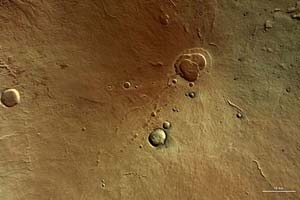
Hecates Tholus Volcano In 3D
The colour image (with north at the top) shows the summit caldera of Hecates Tholus, the northernmost volcano of the Elysium volcano group. The volcano reveals multiple caldera collapses. On the flanks of Hecates Tholus, several flow features related to water (lines radiating outwards) and pit chains related to lava can be observed. The volcano has an elevation of 5300 m, the caldera has a diameter of maximum 10 km and a depth of 600 m. The image centre is located at 150° East and 31.7° North.
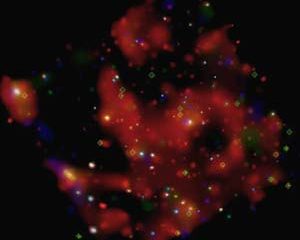
Enigmatic X-ray sources may point to new class of black holes
Mysterious, powerful X-ray sources found in nearby galaxies may represent a new class of objects, according to data from NASA’s Chandra X-ray Observatory. These sources, which are not as hot as typical neutron-star or black-hole X-ray sources, could be a large new population of black holes with masses several hundred times that of the sun.
“The challenge raised by the discovery of these sources is to understand how they produce so much X-ray power at temperatures of a few million degrees,”

Information paradox solved? If so, black holes are ’fuzzballs’
Stephen Hawking and Kip Thorne may owe John Preskill a set of encyclopedias
In 1997, the three cosmologists made a famous bet as to whether information that enters a black hole ceases to exist — that is, whether the interior of a black hole is changed at all by the characteristics of particles that enter it.
Hawking’s research suggested that the particles have no effect whatsoever. But his theory violated the laws of quantum mechanics and created a contradiction known as th
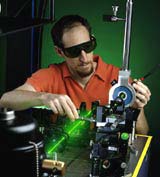
Quantum dots deliver photons one at a time
A National Institute of Standards and Technology (NIST) scientist has demonstrated efficient production of single photons—the smallest pulses of light—at the highest temperatures reported for the photon source used. The advance is a step toward practical, ultrasecure quantum communications, as well as useful for certain types of metrology. The results are reported in the Feb. 23 issue of Applied Physics Letters.
“Single photon turnstiles” are being hotly pursued for quantum communicatio
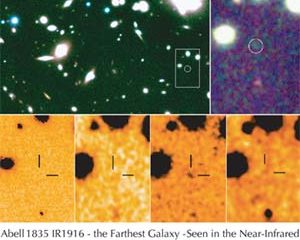
VLT smashes the record of the farthest known galaxy
Redshift 10 Galaxy discovered at the edge of the Dark Ages [1]
Using the ISAAC near-infrared instrument on ESO’s Very Large Telescope, and the magnification effect of a gravitational lens, a team of French and Swiss astronomers [2] has found several faint galaxies believed to be the most remote known.
Further spectroscopic studies of one of these candidates has provided a strong case for what is now the new record holder – and by far – of the most distant galaxy known i
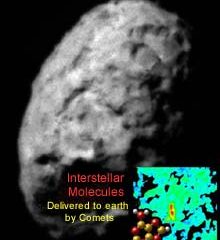
Astrophysicists observe anomalies in makeup of interplanetary dust particle
Scientists from Lawrence Livermore National Laboratory and Washington University have seen carbon and nitrogen anomalies on a particle of interplanetary dust that provides a clue as to how interstellar organic matter was incorporated into the solar system.
Interplanetary dust particles (IDPs) gathered from the Earth’s stratosphere are complex collections of primitive solar system material and carry various isotopic anomalies. Using an ion microprobe that allows isotopic imaging at a scale o